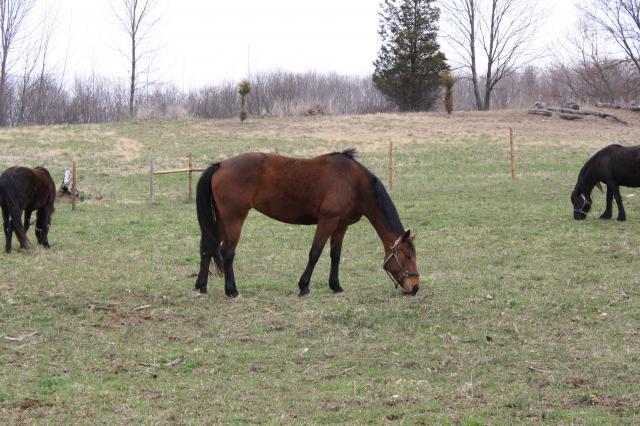I have had my two mares for a few months now and have found yet another horse that I would like to add to my growing collection
 Lacy will be going out for 90 days training next month and I have been looking for another horse to keep my other mare, Pie, company as well as another trail horse since we will be missing Lacy all summer.
Lacy will be going out for 90 days training next month and I have been looking for another horse to keep my other mare, Pie, company as well as another trail horse since we will be missing Lacy all summer.
What do you guys think of this one? She is a 13 year old Irish Sport Horse mare. Had a career is Dressage a few years ago and then was turned out into a pasture other then the occasional trail ride. She is supposedly very laid back and gentle, well trained and just a great all around horse. I would be using her as a trail horse, we ride maybe 3-4X a week an hour each ride. She will need a tuneup and is obviously out of shape, luckily we have a great trainer right down the road who will come and work with her a few times a week quite cheaply until she is up to par....
So if anyone wants to give me a few opinions based off the one crappy picture I have of her that would be great! I am considering going and taking a look (with my trainer) in the next week or so and can hopefully get some better pics.


What do you guys think of this one? She is a 13 year old Irish Sport Horse mare. Had a career is Dressage a few years ago and then was turned out into a pasture other then the occasional trail ride. She is supposedly very laid back and gentle, well trained and just a great all around horse. I would be using her as a trail horse, we ride maybe 3-4X a week an hour each ride. She will need a tuneup and is obviously out of shape, luckily we have a great trainer right down the road who will come and work with her a few times a week quite cheaply until she is up to par....
So if anyone wants to give me a few opinions based off the one crappy picture I have of her that would be great! I am considering going and taking a look (with my trainer) in the next week or so and can hopefully get some better pics.





